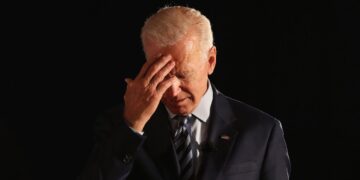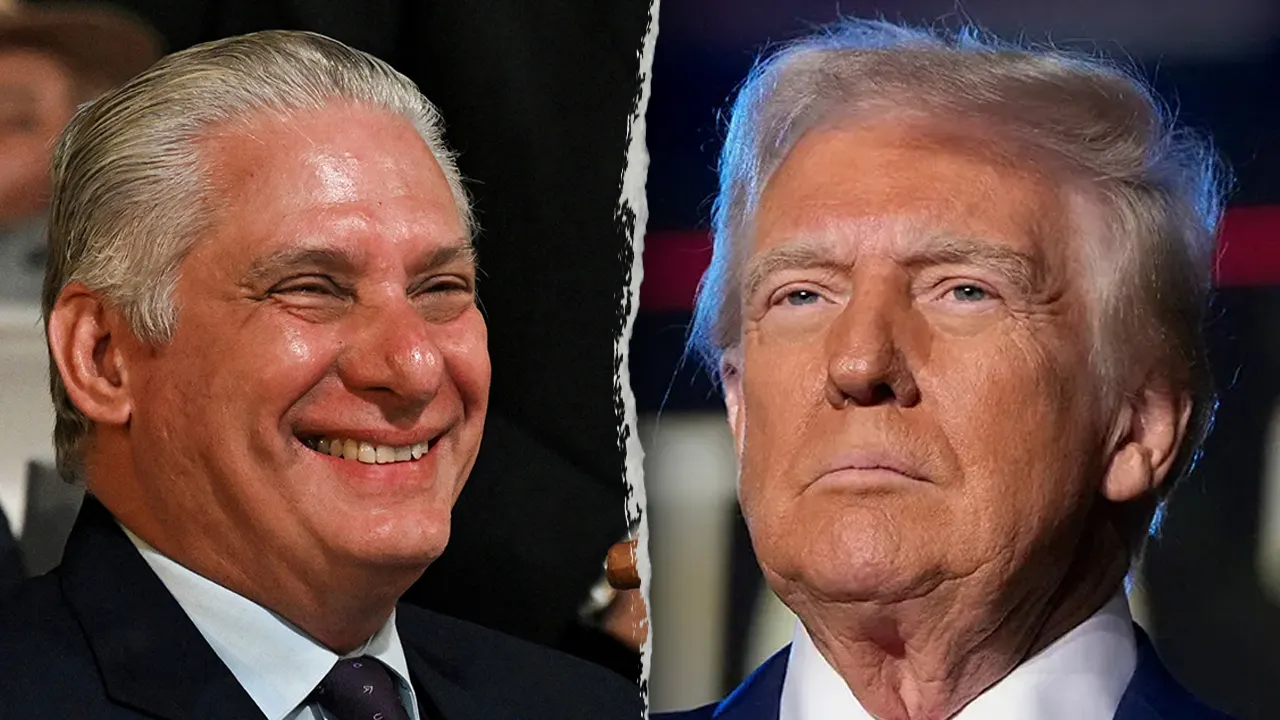If you’ve been keeping an eye on the news, it might seem like the West Coast of the United States is about to fracture. I don’t mean literally. What I mean is, there’s been a lot of talk lately in the Pacific Northwest
About secession—that is, areas wanting to leave the country or leave a state. And that would mean changing state borders that have been in place for more than 100 years. If you look at this map of red counties and blue counties from the 2020 election,
You can see that there’s a big divide in the Northwest. And that could explain why some red counties in Oregon want to leave the state and escape to “Greater Idaho.” A lawmaker from Eastern Washington has called for the creation of a brand new state.
And a radical plan to split California into three states even got onto the ballot recently. I guess ABC News really nailed it in February of 2020 when they said, “The political divide…has gotten so severe that some conservative residents are fighting to secede…”. Wait…February of 2020? That’s a year ago!
Just how far back does this “divide” go, anyway? Hmm, here’s one from 2019. And another from 2017. This article from 2013 asks why are so many counties trying to secede from their states? It turns out, “state partition proposals,” as they’re called,
Have been all the rage in the Pacific Northwest for a long time. A really long time. People in parts of Oregon and Northern California have been trying to establish the State of Jefferson on and off since 1941. Meanwhile, Eastern Washington has been voted “most likely to secede ever since 1861”.
This includes attempts to turn Eastern Washington and parts of Idaho into the State of Lincoln in 1907, 1913, 1915, 1921, 1922, 1923, and 1929, As well as an attempt to turn Eastern Washington into the State of Roosevelt in 1937. Hmm…Jefferson State, Lincoln State, and Roosevelt State.
Because why should President Washington have all the glory? Finally, more recently, there have been proposals to create the State of Liberty out of Eastern Washington in 1985, 1991, 2001, 2005, 2015, 2017, 2019, 2020, and as recently as [looks at watch/phone] right now.
I had no idea that Eastern Washington was the Texas of the Pacific Northwest. But it’s not just Eastern Washington that wants to secede. There is even a small political party, the Cascadia Independence Party, centered around creating a new country—that’s right, country—called Cascadia. More on that after the break. Welcome Back.
Some people in the Pacific Northwest want to form a new country: Cascadia. It would be made from parts of California, Oregon, Washington, Idaho, Alaska, and Canada. That just looks ridiculous. If we’re going to do that, we might as well just take the rest of Canada, too. I call dibs on Prince Edward Island.
To be fair, some supporters see Cascadia not as a separate country, but as a “bioregion.” It’s not clear how a “bioregion” is run politically. Probably…badly. Anyway, as you can see, the current push to form Greater Idaho is just the most recent in a long chain of state partition movements.
Some of the early partitioners wanted to draw new state lines mainly because of geography. People in Eastern Washington had a giant mountain range separating them from the capital, which is near the coast. Back in 1860, as professor at the University of Washington wrote,
“Naturally enough, [residents east of the mountains] were opposed to looking longer toward Olympia for legislative favors and to making that long journey to transact public business.” I can’t say I blame them. I hear traveling across mountains by wagon can be grueling. Donner, party of 50? Too soon?
But geography wasn’t the only thing creating barriers. Later partitioners cited cultural divides between urban and rural areas as a key reason for changing state lines. They felt unrepresented and overridden by folks in big cities. One movement leader in California notes that a single state senator represents 11 counties
In rural northern California, while Los Angeles County alone has 11 senators. Meanwhile, Eastern Washington sends only 33 legislators to the capitol in Olympia, while Western Washington sends 114. This is because there are more people in the urban areas than the rural areas, so they get more representation.
But it wasn’t always that way. Historically, many states had two legislative bodies that were elected differently. State assemblies would be determined by population, so urban areas would have more power. But state senates weren’t weren’t determined by population. Each county in a state would get the same number of state senators
Regardless of how many people lived there. That meant rural areas had more power. But that changed after a 1964 Supreme Court ruling in the case of Reynolds v. Sims. The court ruled that the equal protection clause under the 14th amendment “requires that state
Legislative districts should be comprised of roughly equal populations if possible.” So now state senates are also determined by population. The result is that people in rural areas feel like they’re being squashed by a political majority in a capital far away. A majority that designs policies for Portland or Seattle
That don’t work in other parts of those states. Let’s take the example of rancher Ken Parsons, who lives in La Grande, Oregon. As he explains it: “Let’s just say, for example, I hire a college student during the summer months
To move my irrigation lines. Now I have urban people telling me I have to pay them $15. Well, I’m a farmer. I can’t tell whoever buys my wheat, ‘Gee, I got to raise the price of my wheat guys.’” Other current complaints from partitioners include how the State of Oregon has handled
Certain policies: Like COVID-19 relief, Antifa unrest in Portland, and the new state law decriminalizing the possession of hard drugs. As Mike McCarter, the president of Move Oregon’s Border, puts it: “Now you look and you say, ‘well, if you’re homeless, if you’re a hard drug user,
If you’re a rioter, if you’re an illegal, come to Oregon—we’re a sanctuary state and you won’t get in trouble.’ And that’s not the way conservatives feel in Oregon.” Aha! So, really, it is about modern divisions between political parties. Well, some people certainly think so. Cornell Clayton, a public policy professor
At Washington State University, describes the Eastern Washington state partition movement as an echo of national sentiments. He says, “What it tells us is that in Washington, much like the rest of the country, our politics has become polarized.” Has *become* polarized? If state partition movements reflect polarization,
Was the nation just as polarized in, say, 1907? Or 1915? Or 1937? Or 1941? Perhaps our sense that the political divide in recent times has reached epic proportions is overblown. Or perhaps state partition attempts are just the “way of things” in the Pacific Northwest. As one journalist said,
“Maybe it’s a lingering frontier mentality—leave me alone and let me live my life in peace.” Hey, that’s not just a frontier mentality. We city folk want people to leave us alone, too. That’s why we don’t make eye contact with people on the subway.
Well, that’s also because, someday, the subway rats are gonna come for us, and then it’s every man for himself. So let’s meet some of these Northwestern “state secessionists.” Right after the break. Welcome Back. So let’s meet some of the “state secessionists.”
The current move to create Greater Idaho is spearheaded by a group called Move Oregon’s Border, itself headed by a retired plant nursery worker named Mike McCarter. McCarter says rural people are outraged by “laws coming out of the Oregon Legislature that threaten our livelihoods, our industries, our wallet, our gun rights, and our values.”
He says, “Oregon is a powder keg because counties that belong in a red-state like Idaho are ruled by Portlanders.” And would you really want Portlanders running things? McCarter says, “Divisions in Oregon are getting dangerous, so we see the relocation of the border
As a way to keep the peace. It’s not divisive. Oregon and Idaho are already divided by a state line. The problem is that the location of the state line was decided 161 years ago and is now outdated. Its current location doesn’t match the cultural divide in Oregon.”
Okay, so he’s saying it’s a peaceful, non-divisive division to avoid dangerous divisions. Meanwhile, in Washington State, there are proposals every year in the state legislature to create a new state, the State of Liberty. One advocate for these proposals, Robert Brown, says “[Eastern Washintonians
Are treated] kind of like the red-headed stepchildren just shoved in the corner.” In California, The State of Jefferson movement still seeks to create a new state out of 21 Northern California counties. The current head of the movement is Mark Baird, who states that “it
Doesn’t matter what we think about anything. We can’t get representation on any issues. This is the only way for us to actually have our votes matter and our voices heard.” As you can see, all of these movements consist of people who feel that they are being taxed
While they simply aren’t getting a voice in how their communities are run, which sounds familiar. You know, I feel like there was a saying about that in this country around the time of the American Revolution. I just had it…nah, it’s gone.
Now you might be thinking, these are all examples of red counties wanting to leave majority blue states. Are there blue counties that want to leave red states? Well, one Illinois representative keeps introducing a resolution to make Chicago the 51st state.
Although in that case it’s more like people in the rest of Illinois trying to kick Chicago out of the state, rather than Chicago wanting to leave. I guess they’re tired of dealing with the Windy City. I did find one example of a blue county trying to leave Arizona
And trying to form Baja Arizona instead. But that was back in 2011. That may not be the case anymore, as Arizona slowly turns blue. And that’s the main reason it’s mostly red counties trying to leave these states. Blue counties tend to be more urban, so they tend to have
More power in the state government, thanks to that Supreme Court ruling. So could any of these changes to state boundaries ever realistically happen? Well, the United States Constitution does provide a way for states to change their borders, but it has to get approval from local communities, the state legislatures, and the US Congress.
The local communities are generally on board. State legislatures…not so much. That’s why the bill to turn Eastern Washington into the State of Liberty has never made it past a first reading in committee. And even if that happens, good luck getting the US Congress to do anything.
But maybe there’s a way around that—according to the people behind the Divide New York movement. Under their plan, New York would be divided into three self-governing autonomous regions within one state. Those regions are basically New York City, the suburbs of New York City,
And…the rest of New York state. But since the plan doesn’t want to actually split up the state, it doesn’t have to get approval from Congress. So what do you think of these attempts to create new US states? Should states be split according to political or cultural differences? Leave your comments below.
And don’t forget, America Uncovered is supported mainly by viewers, so please visit Patreon.com/AmericaUncovered. Contribute a dollar or more per episode. We rely on your support to help us keep making great episodes. Once again, I’m Chris Chappell. Thanks for watching America Uncovered.

































 Reaction & Commentary
Reaction & Commentary








